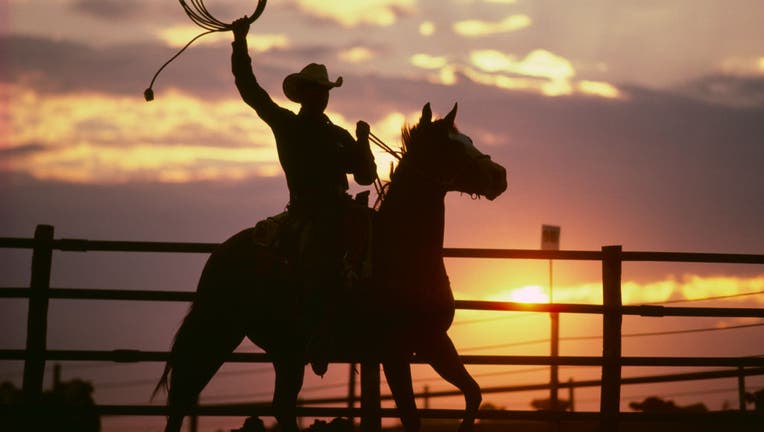Origin of modern horses linked to 4,200-year-old lineage, researchers find

A mounted cowboy silhouetted by the sunset at a beef cattle feedlot, raising his lasso rope. (Photo by: Richard Hamilton Smith /Design Pics Editorial/Universal Images Group via Getty Images)
Scientists have traced the ancestry of the modern horse to a lineage that emerged 4,200 years ago and quickly became dominant across Eurasia. The research published Thursday suggests that’s when humans started to spread domesticated horses around the world.
This horse lineage had a genetic mutation that changed the shape of its back, likely making it easier to ride. People had domesticated other animals several thousand years before horses — including dogs, pigs, cattle, goats, and sheep.
But the new research that analyzed 475 ancient horse genomes shows that the shrinking genetic diversity associated with domestication happened much faster in horses.
Genetic mutation facilitated riding
"In the past, you had many different lineages of horses," Pablo Librado, an evolutionary biologist at the Spanish National Research Council in Barcelona and co-author of the study told the Associated Press.
The genetic diversity was evident in ancient DNA samples analyzed from archaeological sites across Eurasia dating back to 50,000 years ago.
Ancient horse genomes reveal significant change
The 475 ancient horse genomes analysis showed a notable change around 4,200 years ago. A specific lineage that arose in the Pontic-Caspian Steppe, a plains region from northeastern Bulgaria across Ukraine and through southern Russia, began to appear all over Eurasia, replacing other lineages.
"We saw this genetic type spreading almost everywhere in Eurasia — clearly this horse type that was local became global very fast," said co-author Ludovic Orlando, a molecular archaeologist at the Centre for Anthropobiology and Genomics of Toulouse in France.

Ancient gigantic dolphin discovered in the Peruvian Amazon
team of paleontologists from the University of Zurich has discovered a giant new species of freshwater dolphin in the Peruvian Amazon. (Credit: University of Zurich via Storyful)
Researchers believe this change was driven by the Sintashta, a Bronze Age people who domesticated their local horses and used them to expand their territory dramatically. While domesticating wild horses in Eurasia was a process, not a single event, evidence suggests the Sintashta played a crucial role in spreading these particular horses.
Evidence of early horse domestication
Archaeologists have found evidence of people consuming horse milk in dental remains dating to around 5,500 years ago, and the earliest evidence of horse ridership dates to around 5,000 years ago. However, it was the Sintashta who spread their domesticated horses across Eurasia, the study suggests.
Researchers believe the earliest horse ancestors arose in North America and crossed the Bering Strait into Asia around a million years ago, flourishing in Asia but going extinct in the Americas.
The Associated Press contributed to this story. It was reported from Los Angeles.

